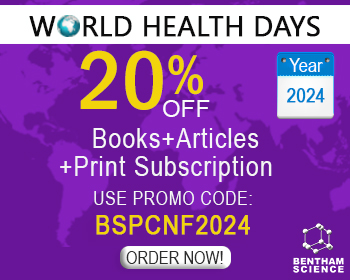Abstract
The naturally occurring polyamines, spermine [NH2(CH2)3NH(CH2)4NH(CH2)3NH2] and spermidine [NH2(CH2)3NH(CH2)4NH2], as well as the diamine putrescine [NH2(CH2)4NH2], are widely spread in nature. They occur in plants, micro-organisms and animal tissues and fulfil many important physiological functions. Due to their cationic nature they interact with negatively charged macromolecules such nucleic acids, phospholipids and proteins. This ionic interaction, which is reversible, leads to the stabilization of DNA, tRNA, membranes and some proteins. Early studies demonstrated that polyamines stimulate the growth of pro- and eukaryotic cells and that they play an important role in carcinogenesis and in malignant transformation processes. As a result of these studies various inhibitors of polyamine biosynthesis have been synthesized and are used to combat cancer and parasitic diseases (e.g., African sleeping sickness).
Keywords: Polyamines, spermine, spermidine, nucleic acids, hypusine, transglutaminases, signal transduction, protein kinases, oncogenes, initiation factors
Current Protein & Peptide Science
Title: Naturally Occurring Polyamines: Interaction with Macromolecules
Volume: 6 Issue: 6
Author(s): Uriel Bachrach
Affiliation:
Keywords: Polyamines, spermine, spermidine, nucleic acids, hypusine, transglutaminases, signal transduction, protein kinases, oncogenes, initiation factors
Abstract: The naturally occurring polyamines, spermine [NH2(CH2)3NH(CH2)4NH(CH2)3NH2] and spermidine [NH2(CH2)3NH(CH2)4NH2], as well as the diamine putrescine [NH2(CH2)4NH2], are widely spread in nature. They occur in plants, micro-organisms and animal tissues and fulfil many important physiological functions. Due to their cationic nature they interact with negatively charged macromolecules such nucleic acids, phospholipids and proteins. This ionic interaction, which is reversible, leads to the stabilization of DNA, tRNA, membranes and some proteins. Early studies demonstrated that polyamines stimulate the growth of pro- and eukaryotic cells and that they play an important role in carcinogenesis and in malignant transformation processes. As a result of these studies various inhibitors of polyamine biosynthesis have been synthesized and are used to combat cancer and parasitic diseases (e.g., African sleeping sickness).
Export Options
About this article
Cite this article as:
Bachrach Uriel, Naturally Occurring Polyamines: Interaction with Macromolecules, Current Protein & Peptide Science 2005; 6 (6) . https://dx.doi.org/10.2174/138920305774933240
| DOI https://dx.doi.org/10.2174/138920305774933240 |
Print ISSN 1389-2037 |
| Publisher Name Bentham Science Publisher |
Online ISSN 1875-5550 |
Call for Papers in Thematic Issues
Advancements in Proteomic and Peptidomic Approaches in Cancer Immunotherapy: Unveiling the Immune Microenvironment
The scope of this thematic issue centers on the integration of proteomic and peptidomic technologies into the field of cancer immunotherapy, with a particular emphasis on exploring the tumor immune microenvironment. This issue aims to gather contributions that illustrate the application of these advanced methodologies in unveiling the complex interplay ...read more
Protein Folding, Aggregation and Liquid-Liquid Phase Separation
Protein folding, misfolding and aggregation remain one of the main problems of interdisciplinary science not only because many questions are still open, but also because they are important from the point of view of practical application. Protein aggregation and formation of fibrillar structures, for example, is a hallmark of a ...read more
Related Journals
 15
15
- Author Guidelines
- Graphical Abstracts
- Fabricating and Stating False Information
- Research Misconduct
- Post Publication Discussions and Corrections
- Publishing Ethics and Rectitude
- Increase Visibility of Your Article
- Archiving Policies
- Peer Review Workflow
- Order Your Article Before Print
- Promote Your Article
- Manuscript Transfer Facility
- Editorial Policies
- Allegations from Whistleblowers
Related Articles
-
Glyconanoparticles for Biomedical Applications
Combinatorial Chemistry & High Throughput Screening Effective Delivery Routes and Strategies for Solid Lipid Nanoparticles (SLN) and Nanostructured Lipid Carriers (NLC)
Current Pharmaceutical Design New Therapeutic Platforms for the Treatment of Epithelial and Cutaneous Lesions
Current Drug Delivery Modified Polysaccharides as Carriers for Biomolecules
Pharmaceutical Nanotechnology Bacterial Urease and its Role in Long-Lasting Human Diseases
Current Protein & Peptide Science Magainin 2-PGLa Interactions in Membranes - Two Peptides that Exhibit Synergistic Enhancement of Antimicrobial Activity
Current Topics in Medicinal Chemistry Immunotherapy in a Natural Model of Aβ Pathogenesis: The Aging Beagle
CNS & Neurological Disorders - Drug Targets Phytochemical Informatics and Virtual Screening of Herbs Used in Chinese Medicine
Current Pharmaceutical Design Warming Up to New Possibilities with the Capsaicin Receptor TRPV1: mTOR, AMPK, and Erythropoietin
Current Neurovascular Research MDA-7/IL-24-Based Cancer Gene Therapy: Translation from the Laboratory to the Clinic
Current Gene Therapy Recent Developments of Melatonin Related Antioxidant Compounds
Combinatorial Chemistry & High Throughput Screening Releasing of Herpes Simplex Virus Carrying NGF in Subarachnoid Space Promotes the Functional Repair in Spinal Cord Injured Rats
Current Gene Therapy Assays for Identification of Hsp90 Inhibitors and Biochemical Methods for Discriminating their Mechanism of Action
Current Topics in Medicinal Chemistry Melanoma
Current Cancer Therapy Reviews Multifunctional Delivery Systems for Advanced oral Uptake of Peptide/Protein Drugs
Current Pharmaceutical Design Phosphatidylinositol 3-Kinase Isoforms as Novel Drug Targets
Current Drug Targets Review on Documented Medicinal Plants used for the Treatment of Cancer
Current Traditional Medicine Leishmaniasis: Prevention, Parasite Detection and Treatment
Current Medicinal Chemistry Recent Patents on Carotenoid Production in Microbes
Recent Patents on Biotechnology Editorial: From Perfume Oils to Discovering and Making New Molecules: An International Chemical Biology Journey
Combinatorial Chemistry & High Throughput Screening























